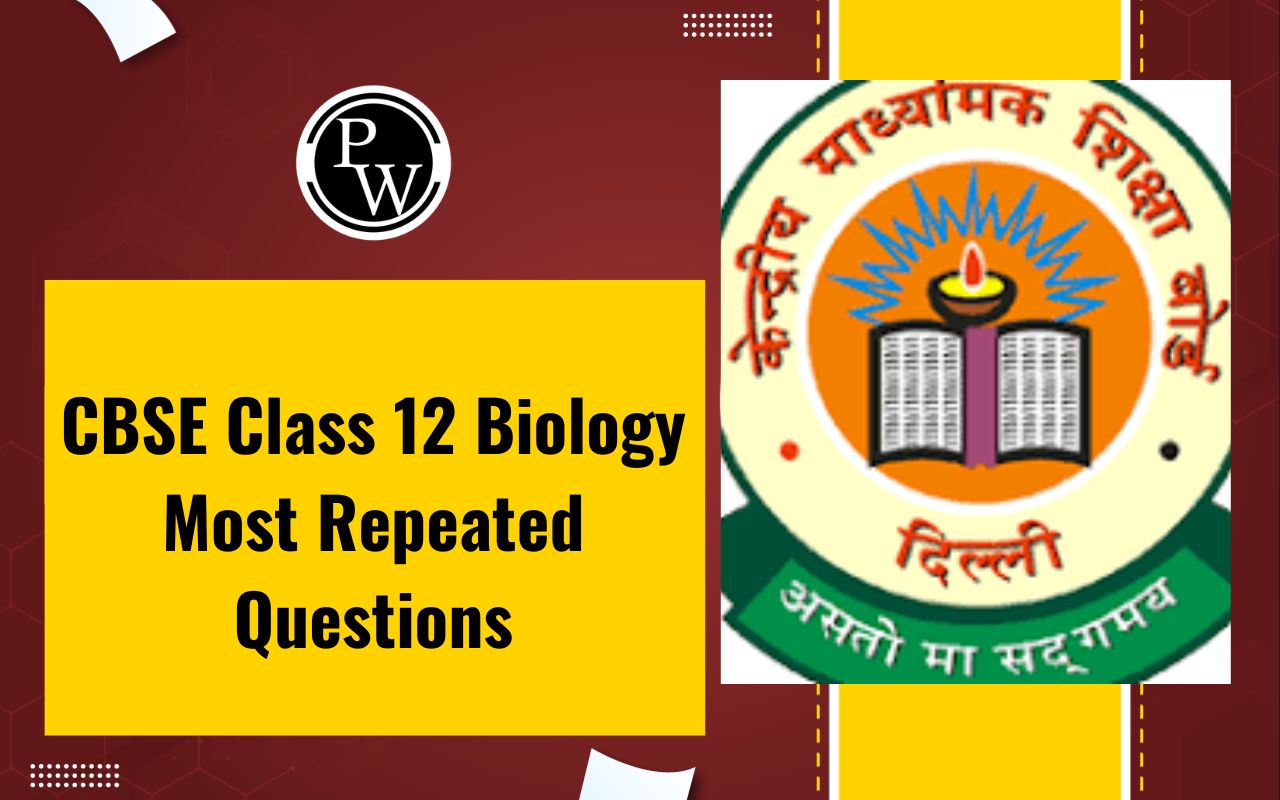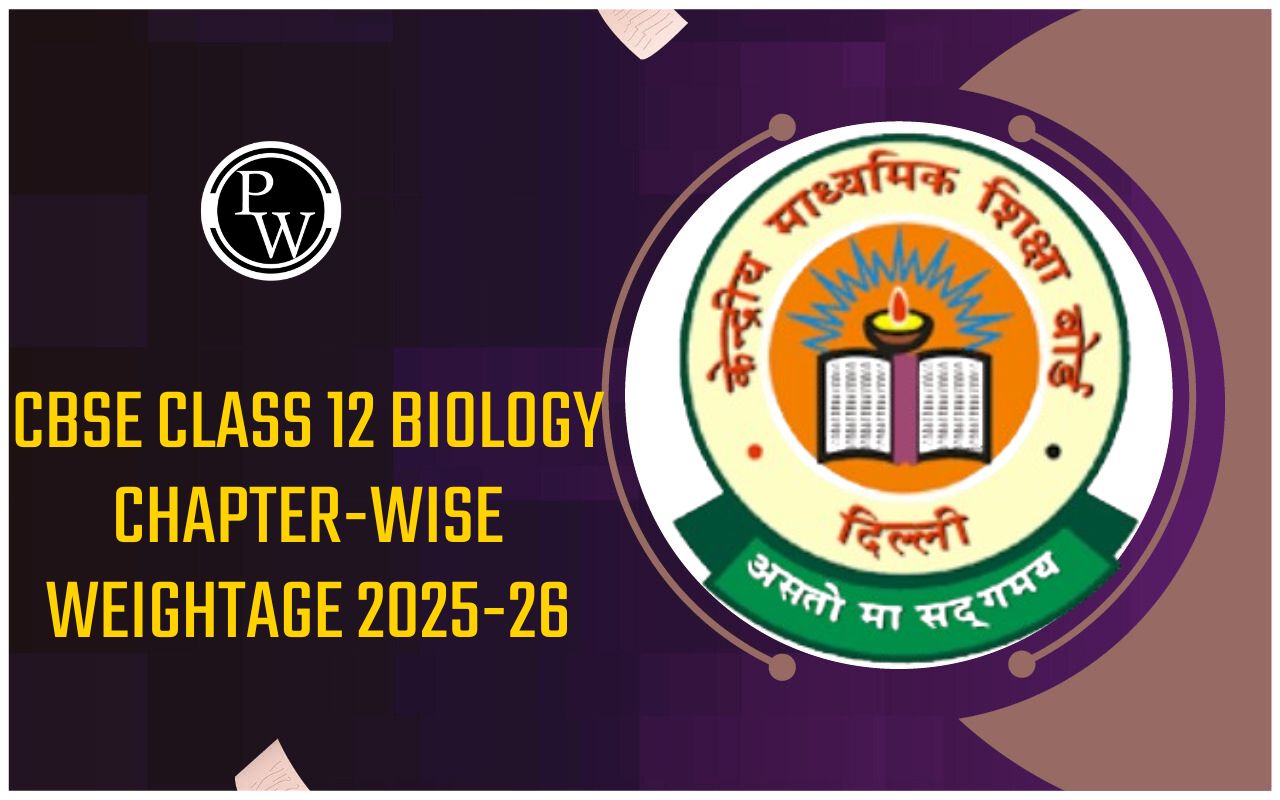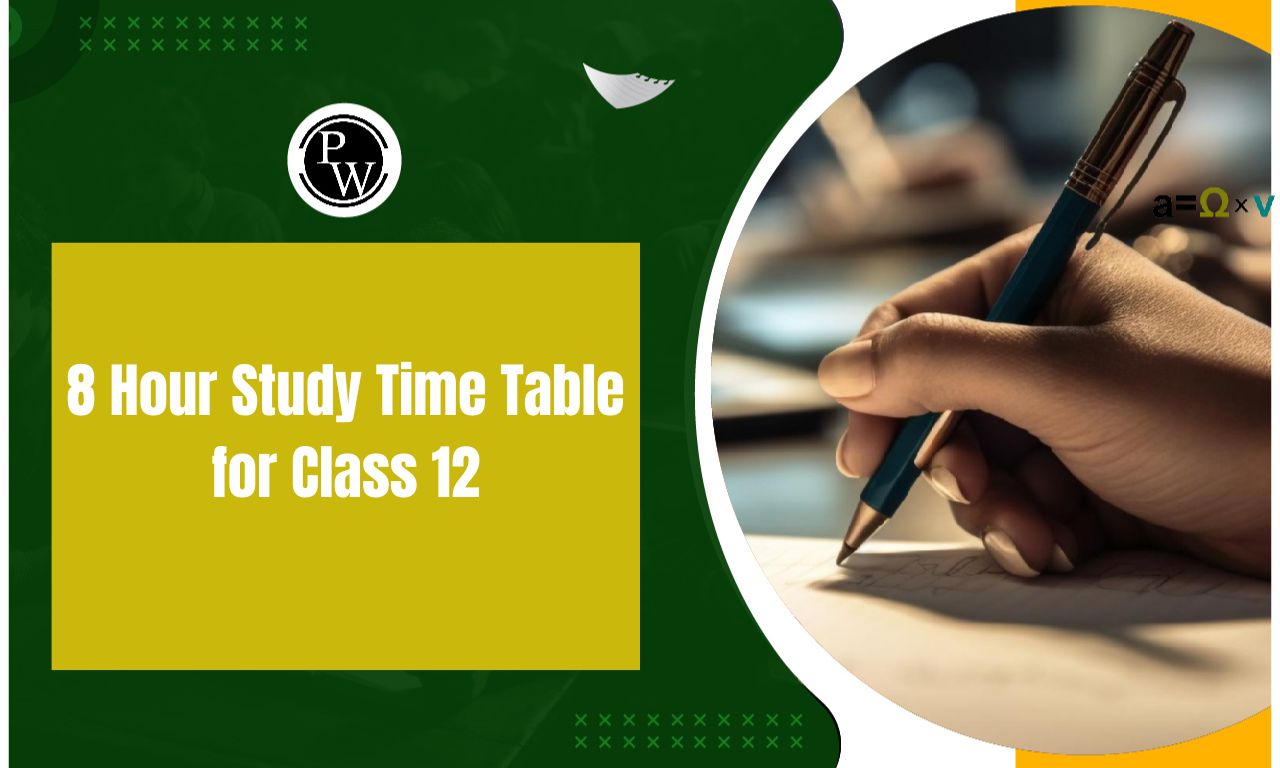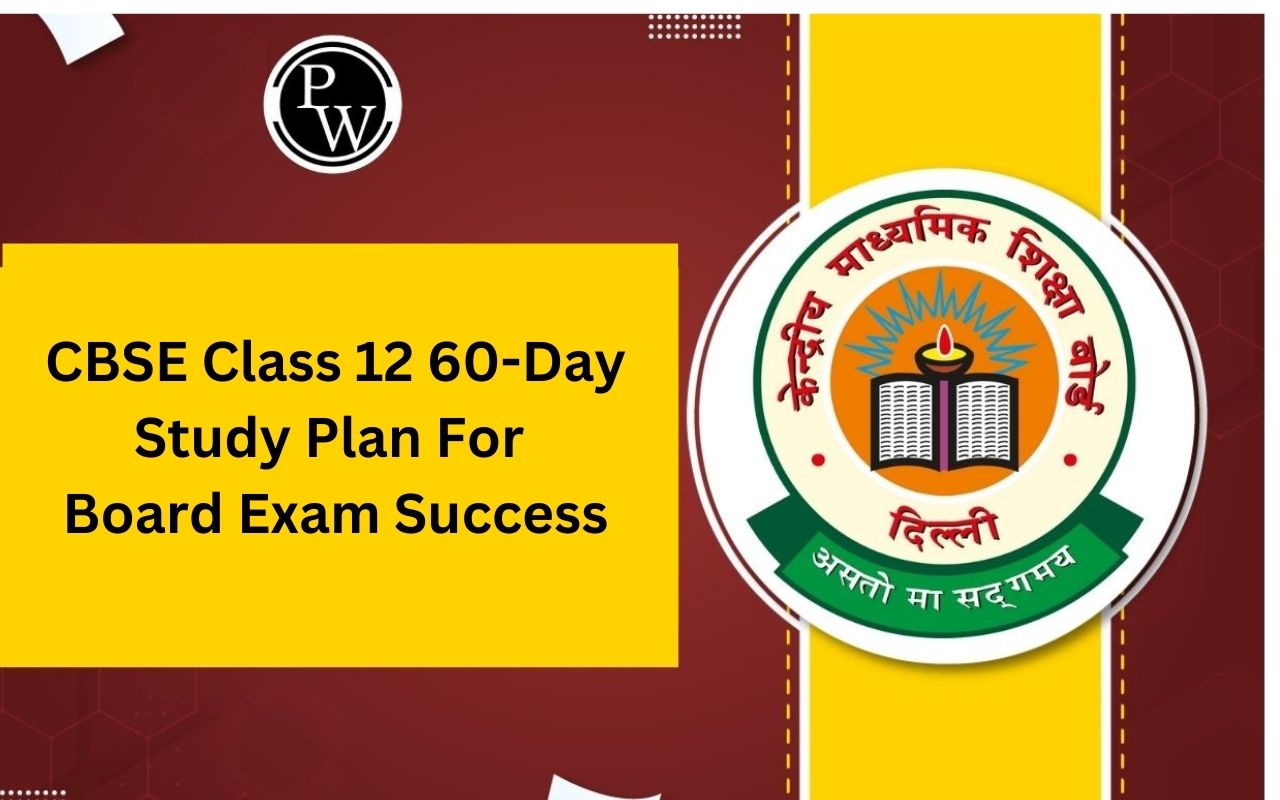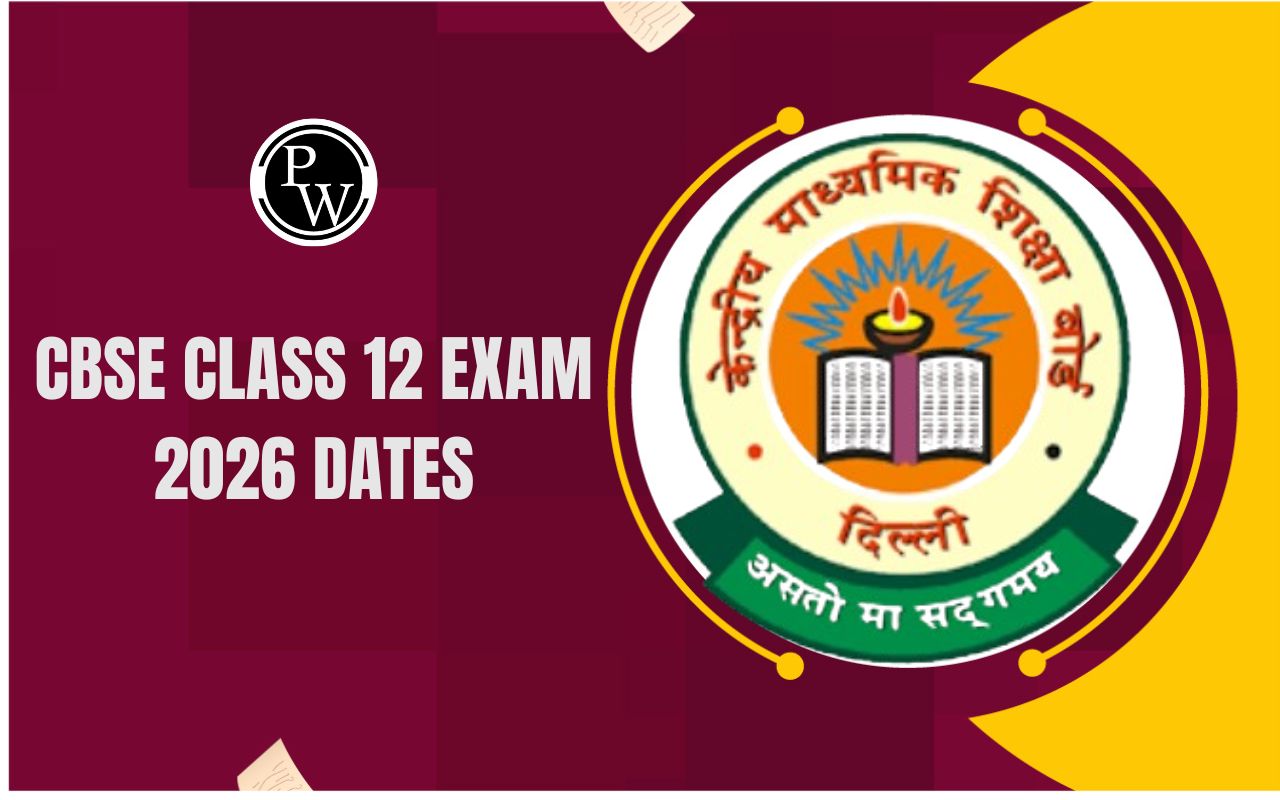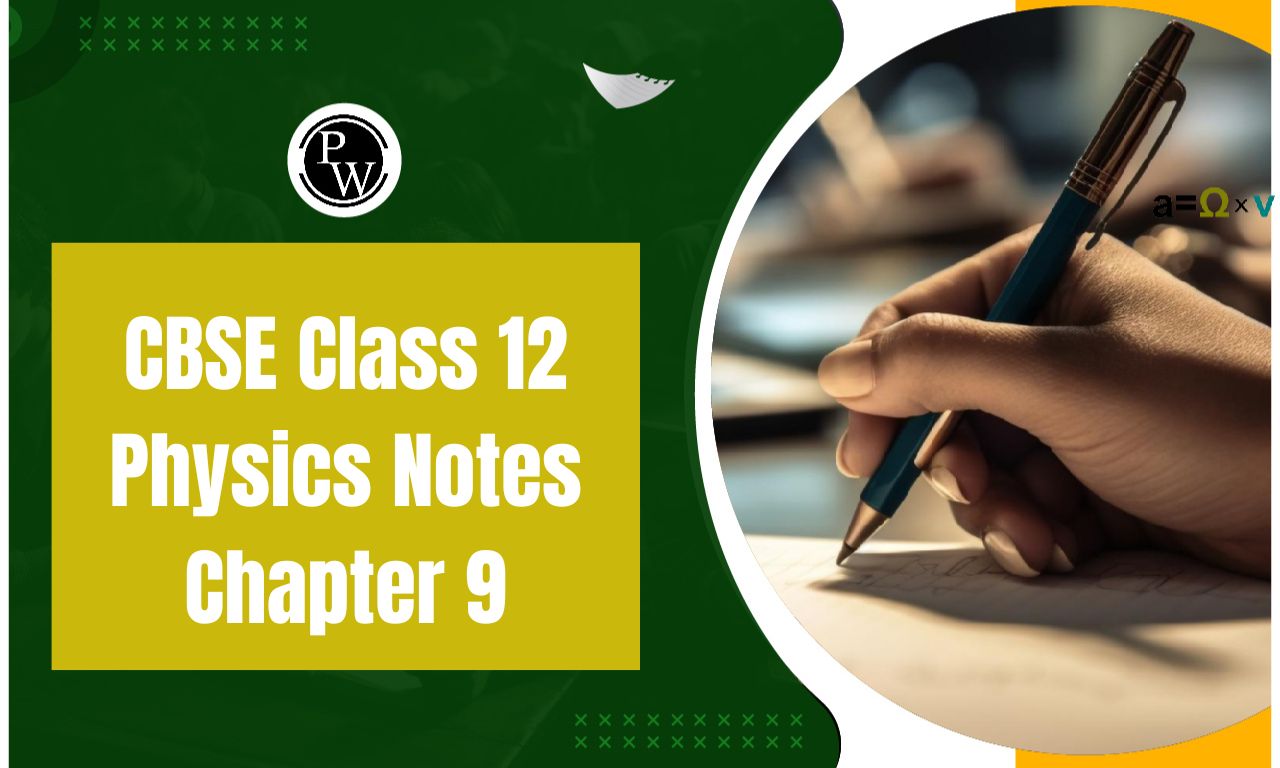

CBSE Class 12 Computer Science Syllabus 2025-26: The CBSE Class 12 Computer Science Syllabus for theoretical and practical has been published by the Central Board of Secondary Education. The CBSE Class 12 Computer Science Syllabus can be downloaded from the official website: cbseacademic.nic.in.
CBSE Class 12 Computer Science Syllabus 2025-26 Overview
The CBSE Class 12 computer science exam would be worth 100 marks, with 70 marks awarded to theoretical and 30 marks allotted to practicals. The theoretical exam consists of three units, while the practical exam consists of a lab test, report file, project, and viva. The course will cover topics such as Computational Thinking and Programming - 2, Computer Networks, and Database Management. Students may also take the CBSE Class 12 Computer Science Previous Year Question test to get a feel for the degree of difficulty and sorts of questions that will be asked in the computer science exam. Read the complete post to get the most updated CBSE Class 12 Computer Science Syllabus 2025-26 PDF, practical syllabus, preparation tips, and other material.CBSE Class 12 Computer Science Syllabus 2025-26 Theory Marking Scheme
The CBSE Class 12 Computer Science examination will be worth 100 marks. Thirty marks will be awarded for a practical exam that students must take. Following the practicals, the board will administer a 70-mark theoretical test. CBSE Class 12 Computer Science Syllabus is broken down into three sections:- Computational Thinking and Programming - 2
- Computer Networks
- Database Management
| CBSE Class 12 Computer Science Syllabus 2025-26 Theory Marking Scheme | ||
| Unit No. | Unit Name | Marks |
| I. | Computational Thinking and Programming – 2 | 40 |
| II. | Computer Networks | 10 |
| III. | Database Management | 20 |
| Total | 70 | |
CBSE Class 12 Computer Science Syllabus 2025-26 PDF
The CBSE Class 12 Computer Science Syllabus for the academic year 2025-26 is an important resource for students studying Computer Science. This syllabus outlines the topics and concepts that students will cover throughout the academic year. Understanding the syllabus helps students plan their study schedule effectively, allocate time for each topic, and ensure comprehensive learning. With the PDF link provided below, students can easily download and refer to the CBSE Class 12 Computer Science Syllabus whenever needed. This enables students to stay organized, track their progress, and prepare thoroughly for their Computer Science classes and examinations.CBSE Class 12 Computer Science Syllabus 2025-26 PDF
CBSE Class 12 Computer Science Syllabus 2025-26
The syllabus for Class 12 CBSE Computer Science includes all the details students need to know about the coursework and practicals they will be doing in the academic year. For students to do well in the CBSE board Class 12 Computer Science exam, they must study every topic listed in the syllabus. Applicants may begin studying for the theory test by reviewing the CBSE class 12 computer science curriculum for the theory paper, which is provided below:Unit I: Computational Thinking and Programming – 2
Basic Python, functions, python libraries, and other advanced computational thinking and programming topics are covered in Unit 1 of the Computer Science Class 12 Syllabus. Now let's examine the Unit 1 syllabus: Below is the detailed syllabus of Computational Thinking and Programming -| Topic | Content |
| Revision of Python topics covered in Class XI | Review of previously learned Python concepts and topics from Class XI. |
| Functions | Types of functions (built-in functions, functions defined in a module, user-defined functions), creating user-defined functions, arguments and parameters, default parameters, positional parameters, functions returning values, the flow of execution, and the scope of a variable (global scope, local scope). |
| Exception Handling | Introduction to exception handling, handling exceptions using try-except-finally blocks. |
| Introduction to Files | Types of files (Text file, Binary file, CSV file), relative and absolute paths. |
| Text Files | Opening and closing text files, text file open modes (r, r+, w, w+, a, a+), working with text files using write() and write lines (), reading from text files using read(), readline(), and deadlines (), seek and tell methods, data manipulation in text files. |
| Binary Files | Basic operations on binary files, file open modes (rb, rb+, wb, wb+, ab, ab+), import pickle module, dump() and load() methods, read, write/create, search, append, and update operations in binary files. |
| CSV Files | Importing the CSV module, opening and closing CSV files, writing to CSV files using a writer(), writers (), writers (), and reading from CSV files using a reader(). |
| Data Structures - Stacks | Introduction to stacks, stack operations (push and pop), and stack implementation using lists. |
CBSE Class 12 Revised Date Sheet
Unit II: Computer Networks
Below is the detailed syllabus of Computer Networks -| Topic | Content |
| Evolution of Networking | Introduction to computer networks, historical evolution (ARPANET, NSFNET, INTERNET). |
| Data Communication Terminologies | Communication concepts, components (sender, receiver, message, communication media, protocols), measuring communication media capacity (bandwidth, data transfer rate), IP address, switching techniques (Circuit switching, Packet switching). |
| Transmission Media | Wired communication media (Twisted pair cable, Co-axial cable, Fiber-optic cable), Wireless media (Radio waves, Microwaves, Infrared waves). |
| Network Devices | Overview of network devices (Modem, Ethernet card, RJ45, Repeater, Hub, Switch, Router, Gateway, WIFI card). |
| Network Topologies and Types | Types of networks (PAN, LAN, MAN, WAN), networking topologies (Bus, Star, Tree). |
| Network Protocols | HTTP, FTP, PPP, SMTP, TCP/IP, POP3, HTTPS, TELNET, VoIP. |
| Introduction to Web Services | WWW, Hyper Text Markup Language (HTML), Extensible Markup Language (XML), domain names, URLs, websites, web browsers, web servers, and web hosting. |
Last Month Preparation Strategy for class 12
Unit III: Database Management
Below is the detailed syllabus of Database Management -| Topic | Content |
| Database Concepts | Introduction to database concepts and their significance. |
| Relational Data Model | Key concepts in the relational data model: relation, attribute, tuple, domain, degree, cardinality, keys (candidate key, primary key, alternate key, foreign key). |
| Structured Query Language (SQL) | Introduction to SQL, Data Definition Language (DDL) and Data Manipulation Language (DML), data types (char(n), varchar(n), int, float, date), constraints (not null, unique, primary key), database operations (create, use, show, drop), table operations (create, describe, alter, drop), data manipulation (insert, delete, select, update), operators, aliasing, distinct clause, where clause, in, between, order by, null, like, aggregate functions, group by, having, joins (cartesian product, equi-join, natural join). |
| Interface of Python with an SQL Database | Connecting Python with an SQL database, performing insert, update, and delete queries using cursor, data retrieval using connect(), cursor(), execute(), commit(), fenchone (), fetch (), row count, creating database connectivity applications, using format specifiers to perform queries. |
CBSE Class 12 Computer Science Syllabus 2025-26 For Practical
Students may see the complete CBSE Class 12 Computer Science Practical syllabus below:1. Python Development
- Line by line, read a text file and show each word separated by a '#'.
- Analyse a text file to determine the number of vowels, consonants, uppercase, and lowercase characters.
- Save any lines in a file that include the character 'a' to another file.
- Make a binary file containing names and roll numbers, and then look for a certain roll number to show the name.
- Make a binary file containing roll numbers, names, and markings. Enter a roll number and update the results.
- Create a random number generator that works like a dice, producing random values between 1 and 6.
- Create a stack using a Python list.
- Create a CSV file containing user IDs and passwords, then read and search for passwords using the user ID.
2. Database Administration
- Create a student table, input data, and use SQL commands like ALTER, UPDATE, ORDER BY, DELETE, and GROUP BY with aggregation functions to conduct different SQL operations.
- Using an appropriate package, integrate SQL with Python.
CBSE Class 12 Computer Science Syllabus 2025-26 Practical Marking Scheme
The following is the mark distribution for CBSE Class 12 Computer Science Practical:| CBSE Class 12 Computer Science Syllabus Practical Marking Scheme | ||
| S.No. | Unit Name | Marks |
| 1. | Lab Test | |
| Python Program (60% logic + 20% documentation + 20% code quality) | 8 | |
| SQL Queries (4 queries based on one or two tables) | 4 | |
| 2. | Report File | |
| Minimum 15 Python Programs | 7 | |
| SQL Queries (Minimum 5 sets using one table/two tables) | ||
| - Minimum 4 programs based on Python - SQL connectivity | ||
| 3. | Project (Using concepts learnt in Classes 11 and 12) | 8 |
| 4. | Viva Voce | 3 |
| Total | 30 | |
CBSE Class 12 Computer Science Syllabus 2025-2026 Project Topics
Some significant recommendations for CBSE Class 12 Computer Science project work are as follows:- The goal of the class project is to develop realistic and usable apps which utilise Python file handling or Python-SQL connection. It should be done in groups of two to three students and should begin at least six months before the deadline.
- By engaging with local companies or discovering valuable issues, projects should solve real-world problems. For example, developing software to generate invoices by GST regulations.
- Encourage Python library usage and innovation for a variety of applications, such as games, educational software, accessibility solutions for impaired students, and mobile apps.
- Students should be encouraged to study on their own and to increase their knowledge as needed.
- While working on projects, emphasise the necessity of avoiding plagiarism and respecting copyright.
How to Download CBSE Class 12 Computer Science Syllabus 2025-26?
You will be able to get the CBSE Class 12 Computer Science Syllabus using a simple approach. The following guidelines will walk you through the easy method of downloading the syllabus:CBSE Class 12 Computer Science Deleted Syllabus
From practicals, the CBSE Class 12 Computer Science Syllabus Deleted Syllabus included subjects like as computational thinking and programming, computer networks, database administration, and Python programming. Students must be ready to remember the reductions via CBSE Class 12 Computer Science Syllabus Deleted Syllabus. Applicants may now concentrate on important topics that will help them master the optional subject.| CBSE Class 12 Computer Science Syllabus Deleted Syllabus | ||
| Unit | Chapter | Topics |
| i. | Computational Thinking and Programming | Recursion – simple algorithms with recursion: print a message forever, the sum of first n natural numbers, factorial, Fibonacci numbers, recursion on arrays: binary search The idea of efficiency: performance measurement in terms of the number of operations Data structures: Lists as covered in Class XI, Stacks – Push, Pop using a list, Queues – Insert, Delete using a list. (One of the data structures is Stack or Queue. While setting the question paper a student will have an option between Stack and Queue.) |
| ii. | Computer Networks | Web Scripting Client side (VB Script, Java Script, PHP) and Server side (ASP, JSP, PHP), Web 2.0 (for social networking) E-commerce payment transactions using online banking, mobile banking, payment apps, and services |
| iii. | Database Management | Create table, drop table, alter table, update.set, insert, delete. |
CBSE Class 12 Computer Science Deleted Practical Syllabus 2025-26
In addition to removing chapters from the theoretical area of the CBSE Class 12 Computer Science Syllabus Practical Syllabus, the Board has eliminated several courses from the practical computer science curriculum. Python programming has essentially resulted in deductions. The following disciplines do not need students to prepare.- Find the factorial of a natural number recursively.
- Create recursive code to determine the sum of all list entries.
- Create a recursive program to calculate the nth Fibonacci number.
Preparation Tips for CBSE Class 12 Computer Science Syllabus 2025-26
- To prepare for computer science, students should study the whole CBSE Class 12 Computer Science Syllabus 2025-26 and review all of the relevant subjects.
- Only read the NCERT-recommended standard books. Only additional literature should be consulted if necessary.
- To examine the test structure and marking system, solve CBSE Class 12 question questions.
- Practice as much as you possibly can. Students may assess their weak areas and improve on them in the meantime with frequent practice.
- To improve your speed and accuracy in the board exam, practise CBSE Class 12 sample papers.
CBSE Class 12 Computer Science Syllabus FAQs
Is class 12 CBSE syllabus 2025-26 released?
The Central Board of Secondary Education has released the new CBSE Class 12 Syllabus 2025-26. The new CBSE curriculum has experienced several changes in contrast to previous years. There is no term-based examination system this year, and the CBSE has returned to the one-time test format.
Will CBSE conduct the board exam 2025-26?
Yes, CBSE will conduct Board examinations for the academic year 2025-26 for classes 10 and 12.
What if I fail in one subject in the 12th board 2025?
According to CBSE, applicants must score at least an E in internal evaluation to pass the test. If a candidate fails one of the five everlasting examination topics, he or she will be assigned to that subject's compartment.
Is a second language compulsory in CBSE 12th?
Depending on the state curriculum, the implementation of learning two languages in the 12th-grade board examinations may differ.
How many MCQs are in CBSE Class 12?
The weightage for short- and long-answer questions has been decreased from 40% to 30% this year. For Class 12, 40% of total test questions will be competency-based in the form of MCQs, case-based questions, source-based integrated questions, or any other kind.
Talk to a counsellorHave doubts? Our support team will be happy to assist you!

Free Learning Resources
PW Books
Notes (Class 10-12)
PW Study Materials
Notes (Class 6-9)
Ncert Solutions
Govt Exams
Class 6th to 12th Online Courses
Govt Job Exams Courses
UPSC Coaching
Defence Exam Coaching
Gate Exam Coaching
Other Exams
Know about Physics Wallah
Physics Wallah is an Indian edtech platform that provides accessible & comprehensive learning experiences to students from Class 6th to postgraduate level. We also provide extensive NCERT solutions, sample paper, NEET, JEE Mains, BITSAT previous year papers & more such resources to students. Physics Wallah also caters to over 3.5 million registered students and over 78 lakh+ Youtube subscribers with 4.8 rating on its app.
We Stand Out because
We provide students with intensive courses with India’s qualified & experienced faculties & mentors. PW strives to make the learning experience comprehensive and accessible for students of all sections of society. We believe in empowering every single student who couldn't dream of a good career in engineering and medical field earlier.
Our Key Focus Areas
Physics Wallah's main focus is to make the learning experience as economical as possible for all students. With our affordable courses like Lakshya, Udaan and Arjuna and many others, we have been able to provide a platform for lakhs of aspirants. From providing Chemistry, Maths, Physics formula to giving e-books of eminent authors like RD Sharma, RS Aggarwal and Lakhmir Singh, PW focuses on every single student's need for preparation.
What Makes Us Different
Physics Wallah strives to develop a comprehensive pedagogical structure for students, where they get a state-of-the-art learning experience with study material and resources. Apart from catering students preparing for JEE Mains and NEET, PW also provides study material for each state board like Uttar Pradesh, Bihar, and others
Copyright © 2025 Physicswallah Limited All rights reserved.
Get App



